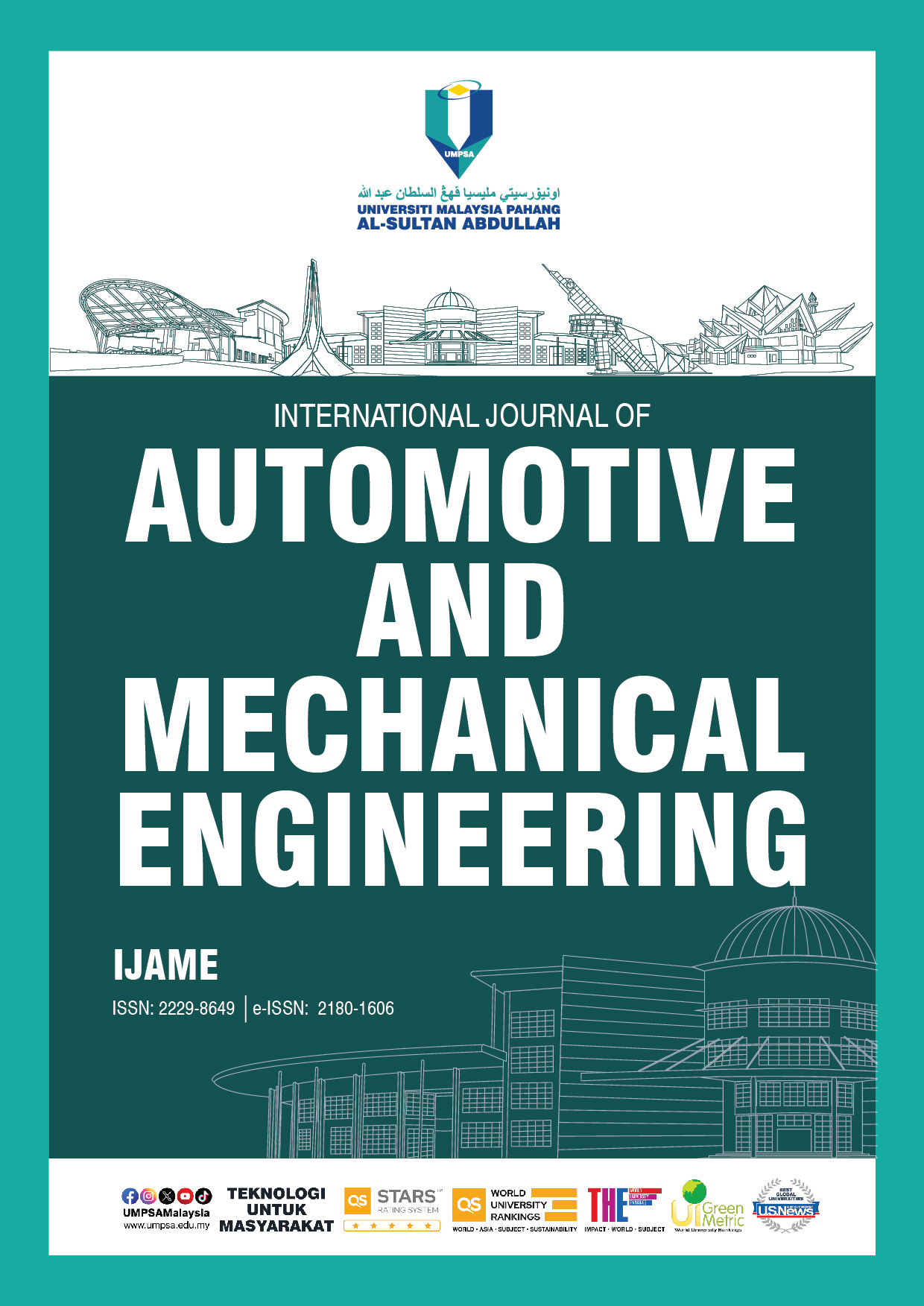Effects of a Hybrid Additive of Ethanol-Butanol and Magnetite Nanoparticles on Emissions and Performance of Diesel Engines Fueled with Diesel-Biodiesel Blends
DOI:
https://doi.org/10.15282/ijame.21.2.2024.13.0876Keywords:
Biofuel, Emission, Nanoparticles, Efficiency, BlendsAbstract
This study concentrates on investigating the impact of hybrid additives of ethanol and butanol with magnetite (Iron oxide nanoparticle) added at 100 ppm each to the biofuels, 10% of the resulting nano-biofuel (5% ethanol and magnetite; 5% butanol and magnetite) was then blended with 90% pure palm oil biodiesel (B100). A single-cylinder Yanmar L70N engine was used in the experiment with the resulting fuel. The engine test results indicated that the addition of magnetite nanoparticles in conjunction with the two biofuels significantly reduced brake-specific fuel consumption (BSFC) up to 15.68% (8.8 gm/kW-hr) compared with B100 (10.4 gm/kW-hr) at peak brake power. The break thermal efficiency (BTE) also improved by 4.26% and 9.71% at tested minimum and maximum brake power, respectively. The emission of hydrocarbon (HC), Carbon Oxide (CO), smoke and nitrogen oxide (NOx) were reduced obviously by 14.45%, 11.98%, 7.25% and 5.77% respectively, compared to pure B100 use at peak load. In general, the application of the dual additive approach of combining biofuels and nanoparticles yields positive results due to the improved surface-to-volume ratio of the nanoparticles and good physicochemical attributes of the biofuels, which enhanced the performance of the B100 fuel; thus, more areas should be exploited in these regards.
Downloads
Published
Issue
Section
License
Copyright (c) 2024 The Author(s)

This work is licensed under a Creative Commons Attribution-NonCommercial 4.0 International License.







